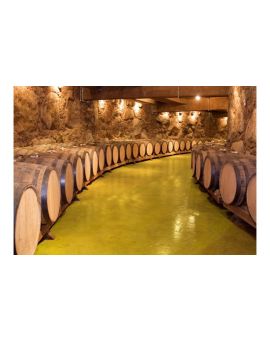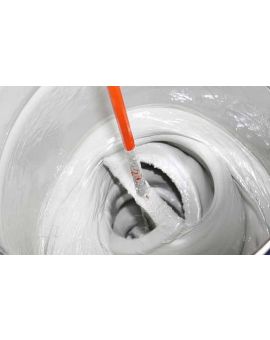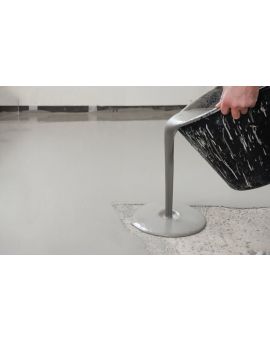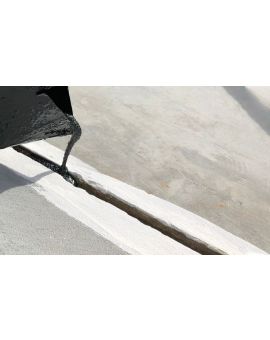£7.75 delivery on orders excluding certain products & postcodes *
Centrecoat Armourcoat Epoxy Joint Compound
Centrecoat Armourcoat Epoxy Joint Compound is a thixotropic, two part, polyurethane modified epoxy joint filling compound for vertical and horizontal joints.
Armourcoat Epoxy Joint Compound is a thixotropic, two part, polyurethane modified epoxy joint filling compound for vertical and horizontal joints.
Best Uses
Centrecoat Armourcoat Epoxy Joint Compound provides good chemical resistance and durability together with a degree of flexibility. Formulated to create joints and seals with low movement accommodation in vertical or horizontal situations.
Centrecoat Armourcoat Epoxy Joint Compound is formulated for application in 6 - 20 mm wide joints that are trafficked. Suitable for up to 40 mm width in non trafficked joints. Available in a range of standard colours, but can be made in special colours on request.
Centrecoat Armourcoat Epoxy Joint Compound is suitable for filling saw cut day work and low movement joints in concrete. Suitable for medium to heavy industrial use.
For joints up to 10mm wide, a 1:1 width to depth ratio is recommended. For joints greater than 10mm wide, up to 2:1 width to depth ratio can be used with a minimum depth of 10mm.
Application
When filling joints, the surface of the joint filler should be brought to just below the surface of the final finish. This is so passing traffic does not abrade the surface of the seal. If the seal is brought flush, this will provide a smooth transfer from section to section but may result in some accumulating damage to the surface with time.
Centrecoat Armourcoat Epoxy Joint Compound will adhere well to a range of surfaces such as concrete, granolithic screeds, epoxy, polyurethane and polymer modified floor and wall finishes. Significant concrete shrinkage will take place in the first 28 days and sealing should not commence before this period. It is recommend that joints are left until the final stages of construction when temperatures have stabilised and initial concrete shrinkage has taken place.
When re-sealing old joints, all existing sealant should be removed and the arris prepared back to sound concrete. All dust and debris should be removed from saw-cut joints by vacuum. The joint surfaces must be clean, dry and dust free. All contamination should be removed by wire brushing, grinding or shot blasting.
A closed cell polyethylene foam backing rod should be used that are accurately placed, well compacted and should not be stretched on installation as this can result in gaps developing under the seal. Where a neat finish is required, mask the top face of the edges of the joint before priming and sealing. Remove immediately after tooling is completed.
Apply Centrecoat Armourcoat 3-350 Primer to the walls of the joint using a clean, dry brush. Avoid applying too much causing puddles in the bottom of the joint. Ensure that a bond breaker or closed cell polyethylene backing strip is installed to the base of the joint after the primer has cured and prior to use of the Epoxy Joint Compound. This strip must fill the based of the channel.
| Components: | Two Pack |
| Type: | Polyurethane Modified Epoxy |
| Finish: | |
| Stock Colours: | Chelsea Blue, Mid Blue, Green, Yellow, Buff, Sahara, Red, Light Grey, Mid Grey, Dark Grey, Charcoal, Black, Safety Red, Safety Yellow |
| Tintable: | Yes, on request. Please note, bespoke tints are non refundable / exchangeable |
| VOC Content: | |
| Volume Solids: | |
| Suitable Substrates: | Vertical and Horizontal Joints in Concrete |
| Application Method: | See data sheet |
| Theoretical Coverage: | See data sheet |
| Wet Film Thickness (WFT): | |
| Dry Film Thickness (DFT): | |
| Induction Time: | - |
| Pot Life: | 50 minutes at 20°C |
| Traffic Ready: | 24 hours at 20°C |
| Overcoatable: | |
| Fully Cured: | 7 days at 20°C |
| Cleaner / Thinner: | |
| Shelf Life: | 12 months if stored in accordance with the above recommendations. |
| Packaging: | Available in 2.5 and 5 Kg |








